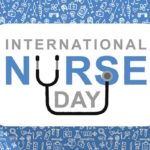- BeatO reported more than 20x growth in its female user base in the last 5 years
- Among BeatO’s female users, a ringing rate of 25% belongs from the age group of 46 to 55 years
India
healthysoch
New Delhi, February28, 2023:
Of its 2 million total user base, BeatO, a comprehensive digital care platform for controlling and reversing diabetes has observed 20x growth in the number of female users in the last 5 years. The digital care platform has positively impacted the lives of over 6 lakh women. 9% of these women belong to the age group of 18 to 25 years, followed by 16% in the age group of 26 to 35 years, 18% from 36-45 years, the largest segment of 25% are in 46 to 55 years age group, 19% are 56-65 years and remaining 13% are from over 65 years age group.
Interestingly only 40% BeatO’s female users are from metros whereas the majority share of 60% belong to tier 2, 3, 4 and beyond. This number reflects increased adoption of technology for healthcare, among females residing in Bharat. While a recent study conducted by experts from All India Institute of Medical Sciences (AIIMS), the Indian Statistical Institute, Prime Minister’s Economic Advisory Council, and Harvard University revealed that Indian women suffer gender bias while accessing health care and gender stereotypes prevent women from voicing their health problems, BeatO is successfully breaking this barrier and providing its female users accessible affordable diabetes care through its app and digital technology.
Gautam Chopra, Founder and CEO, BeatO commented, “Healthcare has traditionally neglected females from its cover unfortunately. Today, mobile phones and the internet have reached the grassroots of India, especially women in smaller towns and cities. Now with the advent of health-tech, this is an opportunity to reach out to more women than ever before and empower them to make decisions concerning their health. Technology has the potential to improve the quality of life for everyone, in every nook and corner of the country, so we are glad to see the uptick in the number of female users coming to BeatO from all corners of India. We expect an exponential increase in our female users in the near future as well who will go on to become the flag bearers of the much needed health-tech revolution in India.”
“As per Nielsen’s Bharat 2.0 Internet study, 1 in every 3 females in rural India is actively using the internet. Female users’ growth in the last 2 years is a whopping 61% as compared to male users whose numbers grew at 24%. With the government and private players like us bringing a lot more emphasis on women adopting technology, we hope that Indian women will be a part of the mainstream population with access to best in class affordable health care.” He added.
BeatO had conducted a survey on ‘Gender differences in accessing and utilizing digital diabetes support platforms in India: Analysis of one million (10,33,148) users’ on their platform. The results of the survey were published with the International Diabetes Federation in 2022.
The findings revealed that though the prevalence of diabetes among women (8.4%), is only slightly lower than that among men (9.1%) yet women face many more hurdles in the accessibility and utilization of digital care. Whilst there has been a very strong uplift in the number of women on BeatO recently, but still with just ~27% of the users being female, BeatO expects to witness an even sharper increase in the coming years as there is still a considerable gender gap in accessing and utilizing digital health platforms in India for female users.
The need to increase the availability and awareness of digital platforms among females with diabetes to improve access to diabetes management is therefore crucial and is currently being addressed by BeatO’s digital comprehensive diabetes care platform.
Among females, the mean age of women accessing BeatO was 48.24 years; the majority had T2DM (95%) with a mean duration of 9.42 years. The majority of females belong to the metro (40%), followed by Tier-IV (32%), Tier-II/Tier III (28%).
Today all stake-holders like government, institutions, policy makers, private players, etc. must leverage the power of technology to reach every Indian household. The very first step must be to address the healthcare needs of females, because by bringing one woman under the umbrella of cover is to reach multiple families together.
healthysoch







awesome